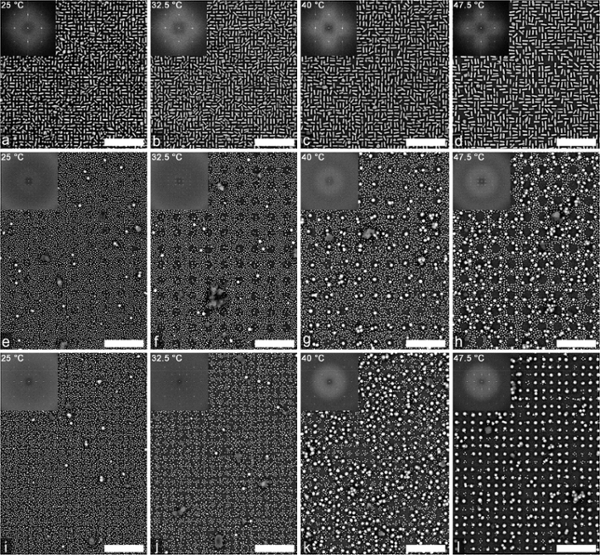New research using EPIC and NUFAB facilities published in Nano Letters
SHyNE Director of Operations Benjamin D. Myers, Postdoctoral scholar Serkan Butun, and NUANCE Director Vinayak P. Dravid were all co-authors of the recently published article, "Stimuli-Responsive DNA-Linked Nanoparticle Arrays as Programmable Surfaces" in Nano Letters. The article examines a new method of making nanoparticle constructs, using DNA-linked nanoparticle assembly to modify individual parts of the surface freely rather than relying on creating a static, unchanging structure from the start.
The substrates used in this study were prepared in NUANCE's Micro/Nano Fabrication Facility (NUFAB). They needed to be extremely thin (around 50 nanometers – about one two thousandth of a human hair or about 250 atoms thick) in order to be transparent enough to electron beam which is used to program them. The process starts with coating a 50 nm layer of a special silicon nitride layer on a silicon wafer. After that the silicon substrate is etched behind to reveal the free standing suspended silicon nitride using a process called deep reactive ion etching. This suspended layer is strong enough to hold itself when it is suspended in air over large area. In comparison, it is equivalent to suspend a ½ inch thick cover over a football field without sagging and structural support.
From the paper's abstract: In this work, the power of DNA-linked nanoparticle assembly is coupled to a grayscale patterning technique to create programmable surfaces for assembly and thermally activated reorganization of gold nanoparticle arrays. Direct grayscale patterning of DNA monolayers by electron-beam lithography (DNA-EBL) enables the production of surfaces with nanometer-scale control over the density of functional DNA. This enables tuning of the particle–surface interactions with single-nanoparticle resolution and without the need for a physical template as employed in most directed assembly methods. This technique is applied on suspended membrane structures to achieve high-resolution assembly of 2D nanoparticle arrays with highly mutable architectures. Gold nanorods assembled on grayscale-patterned surfaces exhibit temperature-dependent configurations and ordering behavior that result in tunable polarization-dependent optical properties. In addition, spherical gold particles assembled from a bimodal suspension produce arrays with temperature-dependent configurations of small and large particles. These results have important implications for the design and fabrication of reconfigurable nanoparticle arrays for application as structurally tunable optical metasurfaces.


